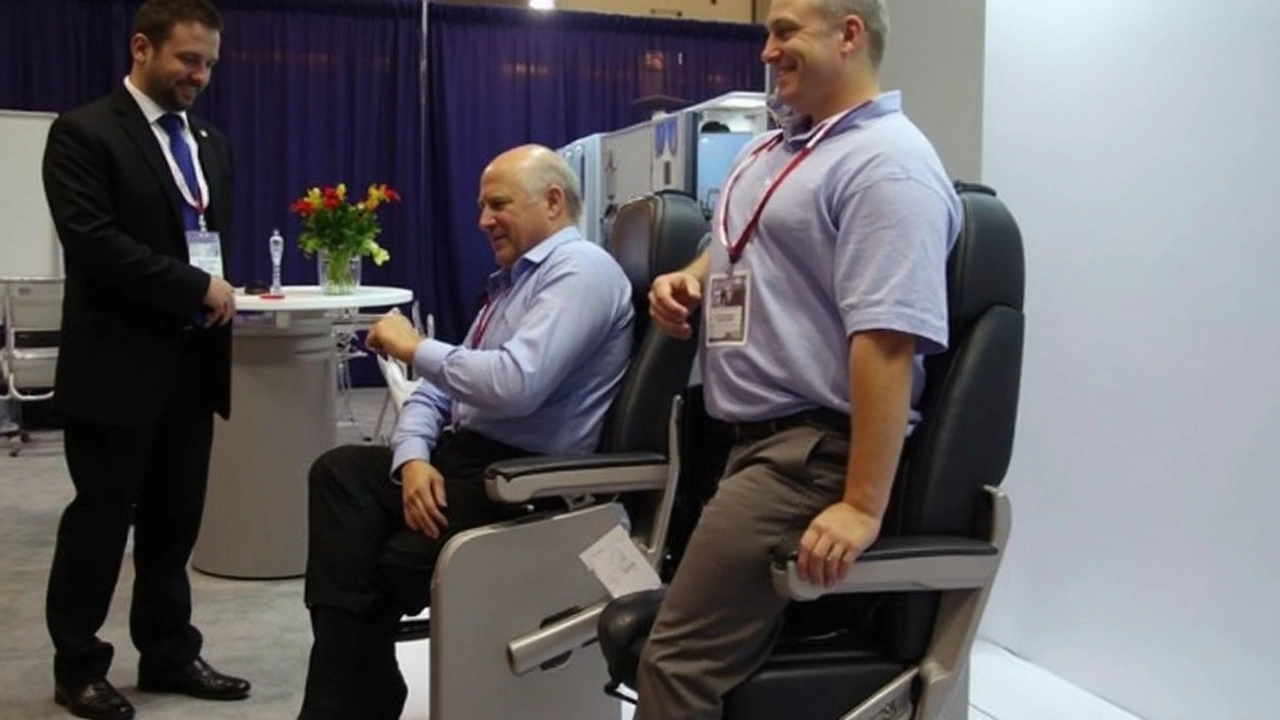VivaColombia Plans Stand-Up Flights to Slash Airfare and Disrupt Travel Norms
VivaColombia's Stand-Up Flight Proposal: Cheaper Tickets, Less Comfort
Imagine boarding a plane, but instead of settling into a familiar narrow seat, you're told to hop onto what looks like a padded bicycle seat—no backrest, barely any cushion, and just a support rail in front of you. Sounds wild? That’s exactly what VivaColombia, the Colombian budget carrier, is pitching with its new stand-up flight idea. The concept has travelers talking, regulators frowning, and the global airline industry watching with curiosity — or alarm.
The numbers tell the story. VivaColombia, led by CEO William Shaw, is laser-focused on one thing: bringing airfares down. “Not everyone cares about a TV screen or fancy snacks for a one-hour flight,” Shaw said recently. By ditching standard seats for vertical 'saddle seats' and packing more people onto each plane, the airline believes they can squeeze even more savings out of already tight margins. The result? Lower costs for everyone—at least for those willing to stand, or rather perch, for their journey.
The idea isn’t totally new. Back in 2003, Airbus floated the concept of “standing room” cabins. Ryanair later gave it serious thought, drawing headlines and plenty of jokes. But so far, no airline has dared to actually rip out seats and commit to this radical setup. Shaw says the time might finally be right: “Why let trains and buses have all the super-budget fun?”
Why VivaColombia Thinks It Can Work
The timing seems strategic. With a shiny new fleet of 50 more fuel-friendly Airbus A320s, VivaColombia is on a mission to trim every ounce of cost from its operations. Already, airlines have shrunk seat sizes, cut legroom, and axed free refreshments. Stand-up flights are just the next bold step.
- By using saddle-style seats, VivaColombia could fit up to 20% more passengers per flight.
- Fares could drop even lower, possibly below those of cross-town bus rides.
- The airline targets short-haul routes, where comfort matters less than price to many travelers.
The airline’s team is crunching data and running simulations, while also working behind the scenes to gauge how far they can go before safety or public outcry gets in the way. To be clear, regulators like Colombia’s civil aviation authority and international bodies haven’t signed off, and probably won’t anytime soon. Safety rules are notoriously strict, and the idea of people being upright during turbulence is a red flag for many experts.
Still, Shaw is betting on a new generation of flyers. He believes families with tight budgets, students, and even curious commuters will value a rock-bottom ticket more than a little in-flight comfort on short hops. “It’s about tearing down barriers to flying and making it like taking a city bus,” he says.
Critics aren’t convinced. Many point out that flying, however brief, should never feel like standing on a subway at rush hour. Yet there’s no denying the game-changing potential if they pull it off—and if regulators ever say yes.





